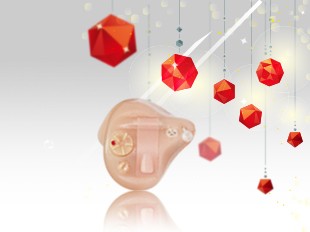Hearing aid troubleshooting methods

First, the hearing aid is silent
If the hearing aid is silent, first check if the switch and volume adjustment are turned on, whether it is on the “M” file, “M” to listen to the sound, “T” to listen to the call, and then check other items. 1. Check the battery 1) Is the battery polarity correct? 2) Is the battery used up? 3) Is the battery door closed? If the battery door is loose or broken, it needs to be repaired; 4) Is the battery and battery compartment clean? If the surface of the battery is dirty or corroded, wipe the surface of the battery with an eraser. If the battery compartment is dirty or corroded, wipe it off with a paper towel. 2. Is the sound hole of the ear mold blocked? 1) Carefully remove the file with a small blunt device (such as a needle eye) or with an ear mold cleaning hook. But never insert too deep (<3mm), especially when cleaning the in-the-ear hearing aid, remove the ear mold from the hearing aid, clean it with warm soapy water, and then completely dry it before receiving it on the hearing aid. If you want to dry the ear mold quickly, use a drum balloon to dry it; 2) Is the ear mold sound tube twisted? This situation is seen when the sound tube is too long and hangs over the ear. In general, the hearing aid option will guide the voice The length of the tube cut is appropriate, but the hearing impaired person who wears the hearing aid for the first time should ask others to check if the wearing is in place; 3) Is the sound tube damp? This condition can be seen when the ear is sweating or is most likely to occur in a humid climate.
Second, the hearing aid whistle
The howling is actually an acoustic feedback, and the amplified sound leaks through the aperture and is re-received by the hearing aid microphone, causing the loop to amplify and causing howling. The howling is divided into internal howling and external howling. The internal howling may be due to the hearing aid itself; the external howling is mostly caused by poor sealing, leakage, or improper wearing of the ear mold; high-power hearing aids are particularly easy. Occurs because it requires the ear mold to be very sealed. Check the method to remove the hearing aid, block the ear hook sound hole, listen to the ear, whether there is a howling, if not, it may be an ear mold or wearing problems. Otherwise it may be a hearing aid problem and it must be turned on. It is normal for the hearing aid to whistle when the hearing aid is only close to an object, such as wearing a hat, palms close to the hearing aid, or near the wall. In addition, if a vent hole is formed on the ear mold or the custom ear machine, it may cause whistling, and the air hole may be blocked by cotton or plasticine to confirm whether it is a whistle caused by the air hole.
category
